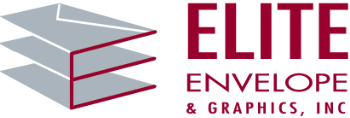Envelope converting can be a confusing and somewhat daunting experience for someone not familiar with the process. For printed envelopes, the term simply means printing on a flat sheet and having the sheets die cut and then folded and glued into envelopes. The term also applies if you’re just cutting the paper with no printing. You are “converting” sheets of paper into envelopes: pretty basic stuff. Once you’ve gone through the process for the first time; it becomes much clearer and easier to understand.
Maybe you’re thinking about designing a custom envelope for a customer. Or maybe you’re an envelope printer and your customer is asking about a specialty envelope. Here are a few things to keep in mind for your first converting job:
- Deal directly with an actual converter – Many companies that sell envelopes and have the word “envelope” in their name are not converters. It’s best to ask first before sending over an order. You’ll be better served by those more experienced in the process and doing the job in-house.
- Preparation is the key to good results - A good converter should provide you with a specific list of instructions before you begin. Most important is a layout of the printed sheet showing where the envelopes should be placed. They will help you through the process.
- Not all design ideas are created equal - If the envelope is printed with a solid that bleeds to an edge, the image must wrap-around to the back by at least one-eighth of an inch in order to account for the normal variation inherent in the process. For window envelopes you can bleed the copy right to the edge of the window when converting. This is not possible with regular envelope printing on a pre-made envelope
- Understand what is possible in the process – speaking of variation, this is something that many designers don’t take into account when creating their envelope. Cutting paper in large reams and folding and gluing involves some variation – generally one-sixteenth of an inch in either direction. This needs to be understood in order to have a satisfactory result and a realistic idea of what to expect. Something that looks great in a direct mail marketer’s imagination doesn’t always translate to the finished product.
- Why convert? – If you want an envelope that features a large amount of ink coverage, generally with bleeds on most or all sides, the best way to proceed would be to print on flat sheets and convert. Anything short of that might be able to be printed on a jet press using pre-made or stock envelopes at a much lower cost. A converter and printer will be able to advise you on the best way to go on your specialty envelopes based on a simple inspection of your artwork.
Custom printed envelopes can enhance your image and cause a potential buyer to be curious enough to at least open it up. Choosing the right envelope company; one which does the envelope converting, printing and manufacturing under the same roof and can make the process easy to understand, is a good place to start.
